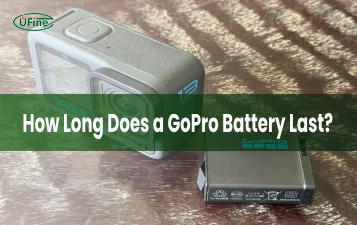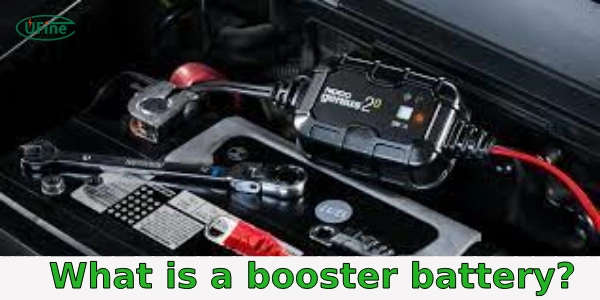From smartphones to electric vehicles, the demand for reliable and efficient batteries is ever-increasing. One of the most essential components in this realm is the booster battery, a device designed to enhance the performance and longevity of various battery-operated systems. In this comprehensive guide, we will delve deep into the world of booster batteries, exploring their definition, components, operating principles, types, uses, and essential maintenance and safety tips.
Part 1. What is a booster battery?
Definition:
A booster battery, also known as a jump starter or jump pack, is a portable device used to start a vehicle with a dead battery. It typically consists of a rechargeable battery housed in a compact case, along with jumper cables or clamps.
Importance:
A booster battery is crucial for drivers who find themselves stranded with a vehicle that won’t start due to a dead battery. It eliminates the need for another vehicle to jump-start the car, making it especially handy in remote areas or during emergencies when assistance may not be readily available. Booster batteries provide a quick and convenient solution, allowing drivers to get back on the road without relying on external help.
They are also versatile tools that can power other electronic devices, such as smartphones or laptops, in situations where access to traditional power sources is limited. Overall, having a booster battery in your vehicle ensures peace of mind and preparedness for unexpected battery failures.
Part 2. Components of a booster battery
A booster battery comprises several essential components that work together to provide reliable power for jump-starting vehicles and powering electronic devices. These components include:
1. Rechargeable Battery:
The heart of the booster battery is a rechargeable battery pack, usually lithium-ion or lead-acid, capable of storing a significant amount of electrical energy. This battery serves as the power source for jump-starting vehicles and providing backup power for other devices.
2. Protective Case:
Booster batteries come in durable and compact cases designed to withstand rugged conditions and provide portability.The protective case shields the internal components from damage due to impacts, moisture, and other environmental factors, ensuring the longevity of the device.
3. Jumper Cables or Clamps:
Jumper cables or clamps are essential accessories included with booster batteries. These cables feature heavy-duty clamps at each end, which drivers use to connect the booster battery to the terminals of the vehicle’s dead battery. The cables facilitate the transfer of electrical energy from the booster battery to the car, allowing it to start.
4. Power Indicator:
Many booster batteries come equipped with a power indicator, such as LED lights or a digital display, to indicate the remaining battery capacity. This feature helps users monitor the charge level of the booster battery. It ensures that users adequately charge it before use.
5. USB Ports:
Some booster batteries feature built-in USB ports that enable users to charge electronic devices such as smartphones, tablets, and laptops. These USB ports provide added versatility, allowing the booster battery to serve as a portable power bank in addition to jump-starting vehicles.
6. Built-in Safety Features:
To prevent damage to the booster battery and ensure user safety, modern devices often incorporate built-in safety features. These may include overcurrent protection, reverse polarity protection, short circuit protection, and thermal protection mechanisms, which safeguard against electrical hazards and misuse.
7. Charging Port:
Booster batteries require periodic recharging to maintain their functionality. As such, they typically include a charging port compatible with standard AC adapters or USB cables. This port allows users to recharge the booster battery conveniently from a wall outlet or other power source.
Part 3. Operating principle of booster batteries
1. Jump-Starting Process:
- Step 1: Connection – Jumper cables or clamps are securely connected to the booster battery and then attached to the terminals of the vehicle’s dead battery. The red clamp is typically connected to the positive (+) terminal, while the black clamp is connected to the negative (-) terminal.
- Step 2: Initiating the Jump-Start – Once the connections are in place, the booster battery is activated, delivering a surge of electrical energy to the vehicle’s battery. This surge provides the necessary power to crank the engine and initiate the vehicle’s ignition process.
- Step 3: Starting the Vehicle – With the additional power from the booster battery, the vehicle’s starter motor receives the energy required to turn the engine over and start the car. Once the engine is running, the booster battery can be disconnected and removed.
2. Boosting Capacity:
Manufacturers design booster batteries to deliver a high current output for short durations, known as their boosting capacity. This capacity is crucial for jump-starting vehicles with dead batteries, as it allows the booster battery to provide the necessary power to crank the engine and start the car.
Factors such as the type of battery cells used, the size of the battery pack, and the efficiency of the electrical components determine the boosting capacity of booster batteries. Manufacturers commonly use lithium-ion and lead-acid batteries in booster batteries due to their ability to deliver high currents.
Despite their compact size, booster batteries can deliver significant boosting capacity, often exceeding several hundred amps. This high current output is essential for overcoming the resistance of a dead battery and initiating the vehicle’s ignition process.
Part 4. Types of booster batteries
Booster batteries come in various types, each with its unique features and advantages. Here are some common types:
Portable Jump Starters
Portable jump starters are compact, handheld devices designed specifically for jump-starting vehicles. They typically feature built-in rechargeable batteries, jumper cables, and sometimes additional functionalities like USB ports for charging electronic devices. Portable jump starters are convenient for storing in vehicles and are ideal for emergencies.
Lithium-ion Jump Starters
Lithium-ion jump starters utilize lithium-ion battery technology, which offers several advantages, including lightweight design, fast charging times, and high energy density. These jump starters are often smaller and lighter than traditional lead-acid jump starters, making them highly portable and suitable for frequent use.
Multi-Function Jump Starters
Multi-function jump starters combine jump-starting capabilities with other features such as air compressors, LED flashlights, emergency strobe lights, and USB charging ports. These versatile devices provide a range of functionalities beyond just jump-starting vehicles, making them useful for various emergencies and outdoor activities.
Heavy-Duty Jump Starters
Manufacturers design heavy-duty jump starters for larger vehicles such as trucks, RVs, and boats, which require more powerful jump-starting capabilities. These jump starters typically feature higher cranking amps and heavier-duty components to accommodate the larger engines and higher energy requirements of heavy-duty vehicles.
Solar-Powered Jump Starters
Solar-powered jump starters incorporate solar panels into their design, allowing them to harness solar energy to recharge the internal battery. These jump starters are environmentally friendly and provide an additional charging option when traditional power sources are not available. However, they may have longer charging times compared to other types of jump starters.
Part 5. Applications of booster batteries
Booster batteries have a wide range of applications beyond just jump-starting vehicles. Here are some common uses:
Automotive Emergency
The primary application of booster batteries is to jump-start vehicles with dead batteries. Whether it’s a car, truck, motorcycle, or boat, booster batteries provide a reliable power source to get the engine running again in emergencies.
Outdoor Activities
Booster batteries are essential companions for outdoor enthusiasts engaged in activities such as camping, hiking, boating, and off-roading. They can power portable electronic devices like smartphones, GPS devices, and camping lights, ensuring connectivity and safety during outdoor adventures.
Roadside Assistance
Roadside assistance professionals rely on booster batteries to quickly and efficiently help stranded drivers with dead batteries. These professionals carry portable jump starters in their vehicles to provide on-the-spot assistance to motorists in need.
Construction Sites
Construction sites commonly use booster batteries to power tools and equipment. They can provide backup power in remote locations where access to electrical outlets may be limited or unavailable, increasing productivity and efficiency on the job site.
Emergency Preparedness
Booster batteries are essential components of emergency preparedness kits for homes, businesses, and communities. They can provide backup power during power outages caused by natural disasters or other emergencies, ensuring communication and safety until regular power returns.
Recreational Vehicles (RVs)
RV owners often carry booster batteries to power auxiliary systems such as lights, appliances, and entertainment devices when camping off-grid. Users can also use booster batteries to start the RV engine if the vehicle’s primary battery fails.
Boating and Marine
Booster batteries are essential for boaters to start engines and power onboard electronics such as radios, GPS systems, and fish finders. They provide peace of mind and safety on the water by ensuring reliable power in case of emergencies or equipment failures.
Part 6. Booster battery maintenance and safety tips
- Regularly inspect the battery: Check for any physical damage like cracks or leaks, and ensure the terminals are clean and free from corrosion.
- Keep the battery charged: Charge the booster battery regularly, ideally every few months, to maintain its readiness for use in emergencies.
- Store the battery properly: Store the booster battery in a cool, dry place away from direct sunlight and extreme temperatures to prevent damage.
- Follow manufacturer’s instructions: Adhere to the instructions provided by the manufacturer for charging, usage, and maintenance to ensure optimal performance and safety.
- Ensure correct connection: When jump-starting a vehicle, make sure to connect the booster battery’s cables/clamps to the correct terminals following the proper sequence.
- Wear protective gear: Use gloves and safety glasses when handling booster batteries to protect against chemical exposure and electrical hazards.
- Avoid overloading: Do not exceed the maximum load capacity of the booster battery when jump-starting vehicles to prevent damage to the battery and the vehicle’s electrical system.
- Dispose of properly: When it’s time to replace the booster battery, dispose of it according to local regulations for recycling or hazardous waste disposal to minimize environmental impact.
Part 7. FAQs
-
Will a battery booster start a dead battery?
Yes, a battery booster can start a dead battery by providing it with a surge of electrical energy to initiate the vehicle’s ignition process. -
Can you replace the battery with a battery booster?
Yes, in many cases, users can replace the battery in a battery booster. However, it’s essential to consult the manufacturer’s instructions or contact customer support for guidance on replacing the battery safely. -
Can a completely dead battery be boosted?
Yes, you can often boost a completely dead battery using a battery booster. However, it may take longer to charge a completely dead battery compared to one with some remaining charge. -
How do I choose a battery booster?
When choosing a battery booster, consider factors such as its cranking amps, compatibility with your vehicle, portability, additional features (like USB ports), and user reviews.
Related Tags:
More Articles

GoPro Battery Life Comparison: How Long Does a GoPro Battery Last?
Find out how GoPro battery life varies by model and get practical advice to maximize runtime for every adventure.
What Battery Powers Your GoPro?
Learn all about GoPro batteries - compatibility, runtime, charging tips, and how to extend battery life for longer shoots.
What Is a Disk Battery? A Simple Guide for Non-Tech Users
A disk battery is a small, round cell used in watches, remotes, and other electronic devices. It delivers steady power for compact, low-drain devices.
What Battery Powers a Space Heater?
Discover the type of battery that powers space heaters and learn how to choose the right one for efficient heating in your home or office.
What Is an LR14 Battery? Learn About This C-Size Cell
The LR14 battery, also known as a C battery, delivers steady power. Learn its specs, uses, lifespan, and how it compares to other battery types.




